Whalehead: it causes unconscious anxiety in humans (14 photos)
There are birds in the world that are objectively more dangerous than the shoebill, but none of them look so scary. The bird's very presence creates an aura of danger. Its slow movements evoke thoughts of a sneaking predator, and the look of its intelligent, attentive eyes inspires vague anxiety even through the screen. And so it seems that you understand with your mind that you don't need to be afraid, but you can't overcome your fear right away. 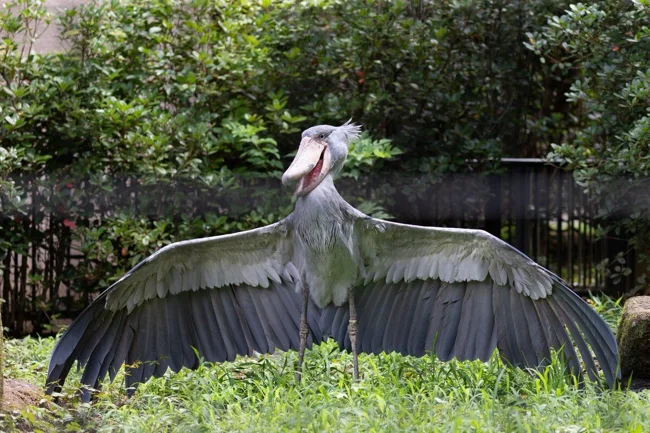
It seems like animation, 3D graphics or a neural network drawing, but this is the most ordinary photo of our guest. 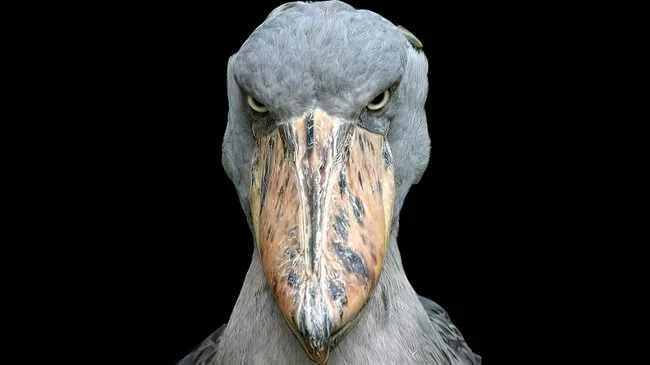
Looks as scary as a teacher at an exam.
The whale-head's sinisterness rests on three pillars. First, it has a strange appearance, second, creepy eyes, and third, an unpleasant, repulsive voice. It is in combination that they create that very disturbing image. But we will analyze them separately, so that it is not so scary. 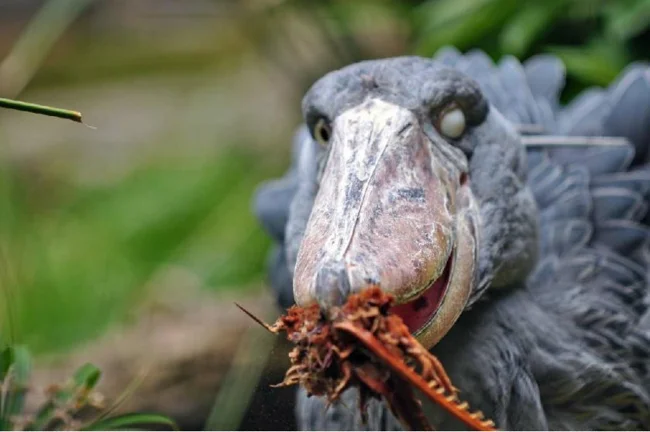
Luckily, he is not blind in one eye, he just blinked his third eyelid. You and I can't do that, humans don't have a third eyelid.
A terrible appearance
This is not just a large bird, it is huge. Height up to 140 centimeters, weight up to 7 kilograms, a powerful beak and ash-gray plumage included. The human brain automatically records a creature of this size as a potential enemy. After all, a predator 140 centimeters at the withers is a monster that even a spear will not save you from. 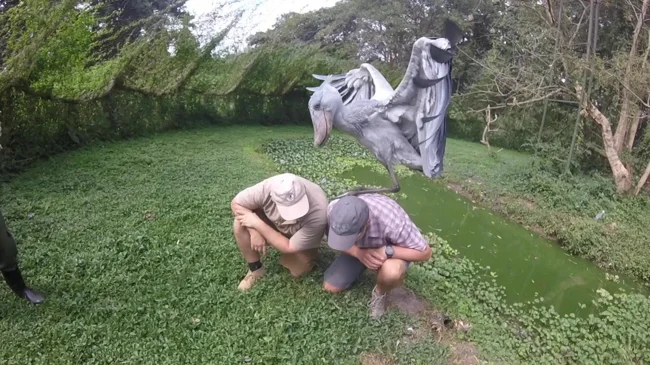
Dominate, rule, humiliate!
The tension is further heightened by the manner in which the shoebill moves. Shoebills always walk slowly and thoughtfully, like predators ready to attack. And, in fact, this is true. Shoebills live in the freshwater swamps of Central Africa, in thickets of reeds and papyrus. They slowly comb the vegetation, practically without causing waves, without shaking the reeds. Fish, waterfowl, and baby crocodiles and monitor lizards do not notice the predator until it delivers a quick, powerful blow with a wide, heavy beak with a claw at the end. 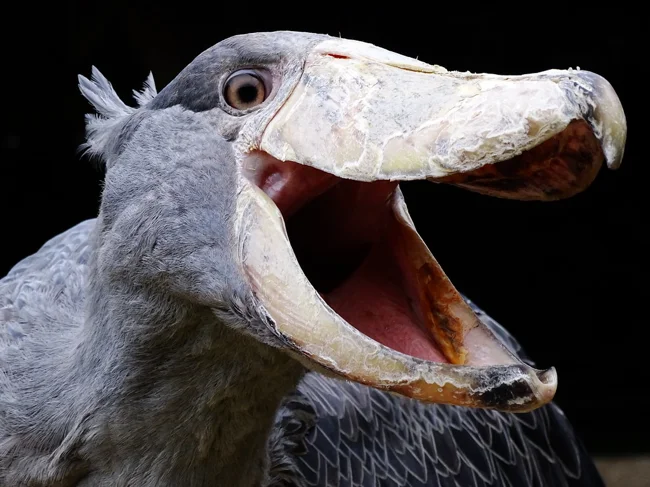
The sharp edge of the beak allows it to catch slippery fish. 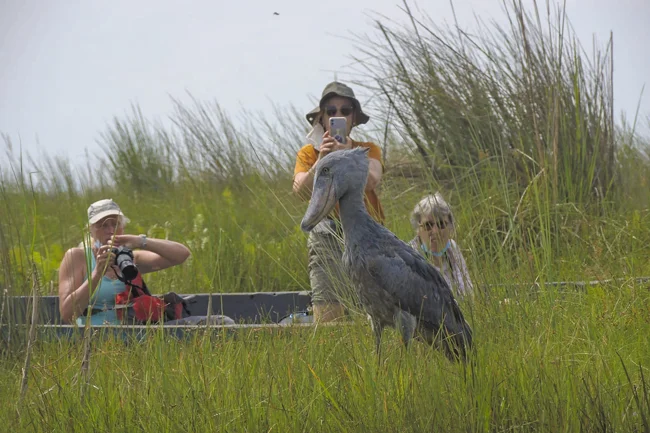
A shoebill in its natural habitat.
Creepy eyes
Shoebills have a unique eye placement for birds: they are located in the front of the skull, not on the sides, which completely breaks the image of a bird constructed by the mind, confusing us. Also, binocular vision is predominantly possessed by active predators, so our brain, forged in the Paleolithic, interprets a close look as a threat and potential danger. And again, in general, the brain is not wrong. 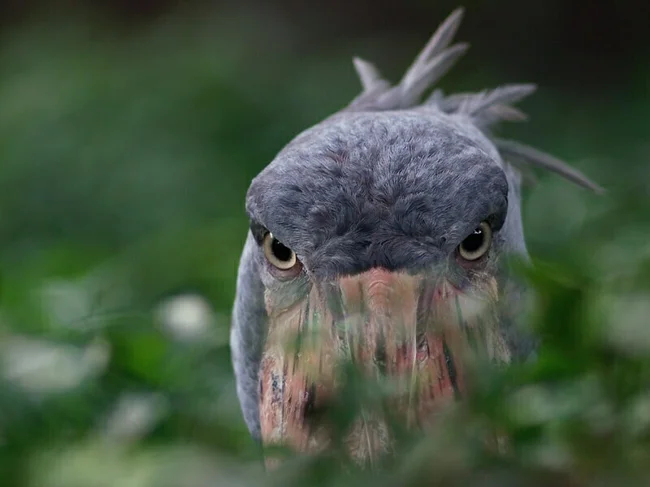
I'm watching you, human...
The shoebill needs binocular vision for hunting. Despite the fact that the bird spends most of the day in the bush, it relies on sight for hunting, not hearing or smell. Having spotted prey, it carefully aims before striking. This is where binocular vision comes in handy. Thanks to it, the bird can accurately estimate the distance to the prey. This is very important, because the bird will not have a second chance to attack. And in 60% of cases, it does not miss. 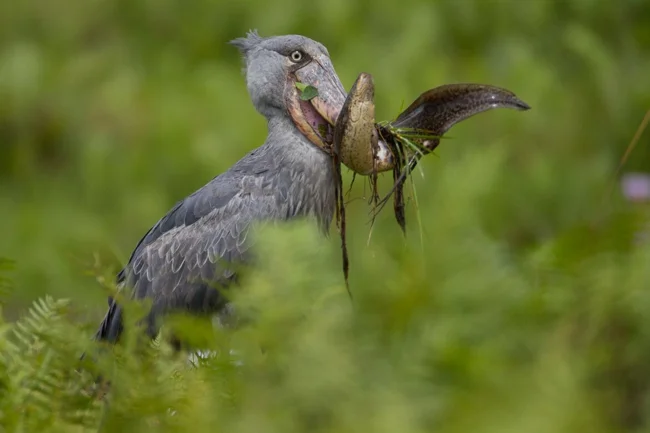
Whoebills are capable of swallowing prey up to 60 centimeters long.
A creepy voice
And the shoebills sound downright scary. They moo, whine, caw and loudly click their beaks. It's loud, completely unmelodious and sounds like a sign that says "keep out - it will kill you". The sound is uncomfortable and makes you want to get away from it. And for the third time, our instincts are right. You can listen to his voice in a short video below: 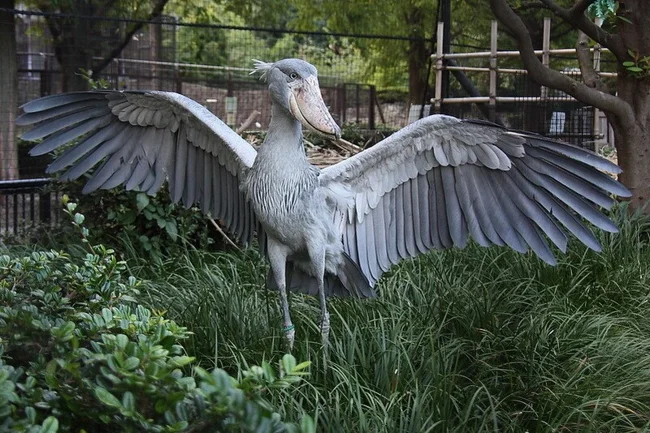
You won't get any further!
Shoebills are solitary or paired birds that are extremely territorial. They use a loud, rough cry that differs from the standard trills not only to attract the attention of females, but also to scare off competitors. Each pair of shoebills has a territory of up to 4 square kilometers, and they are ready to defend it with all their might. Especially when they have children. 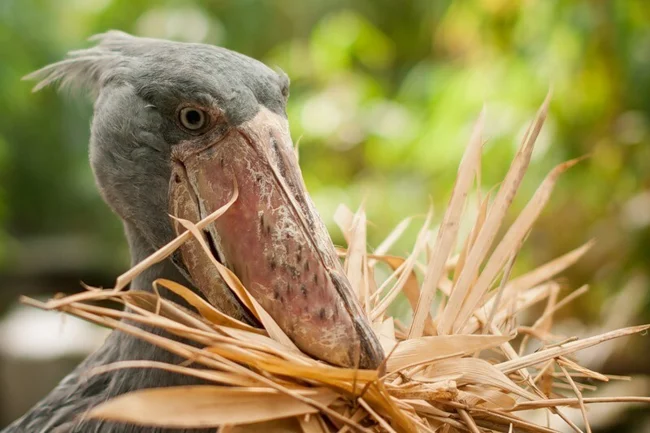
A shoebill at work. And not at all creepy.
Shoebills usually lay 2-3 eggs, but all the chicks, except for the first one that hatches, are spare. They survive only if the older one dies, or if the year turns out to be very fruitful for fish. With such low fertility, shoebills are simply obliged to guard their borders with all their might. 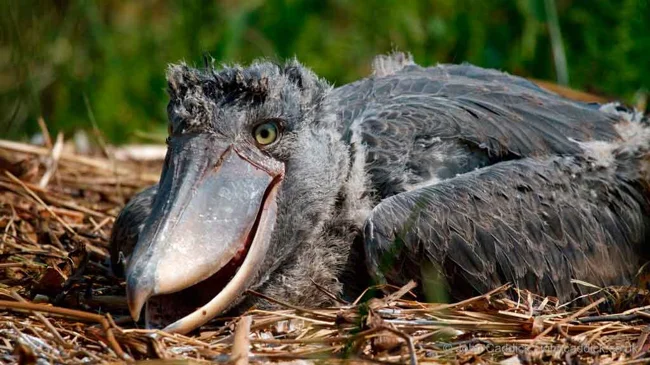
The nests of shoebills correspond to their size - up to 2 meters in diameter! Right in the middle of the swamp.
Sudden conclusions
So what does this mean? Shoebills are creepy because they are... creepy? These are not the quirks of our minds, but completely legitimate concerns based on specific signs. The brain simply does not take into account that the "creepiness" is directed at smaller animals and other shoebills. The shoebill is surprisingly loyal to humans. It quickly gets used to their presence and, with sufficiently close acquaintance, does not express alarm even if a person gets close to its nest. All that remains is to overcome the natural fear of the bird. 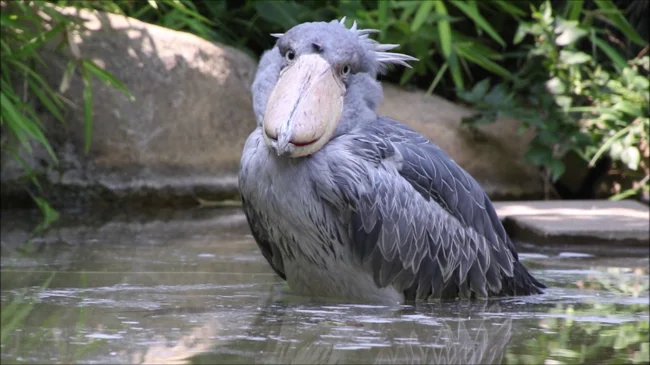
Oh, come on, he's a cutie! 
Or a creepy dinosaur? 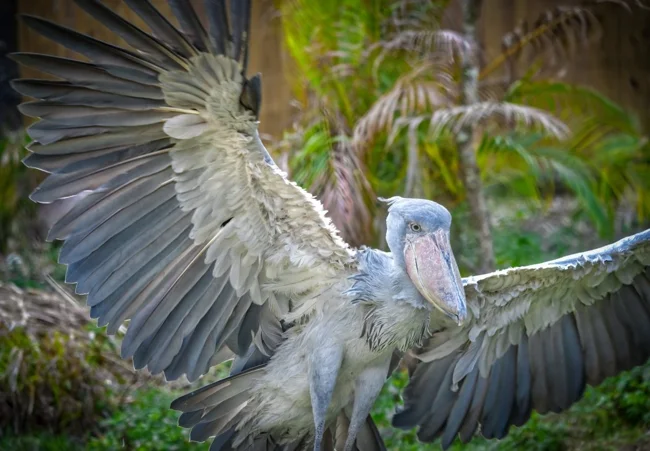
However, I flew to my native swamp, think what you want!




























